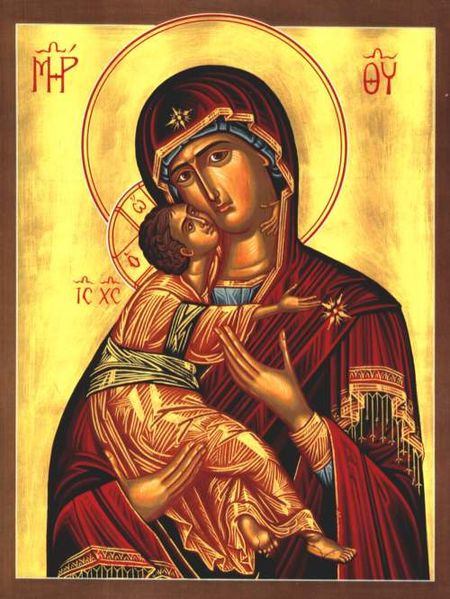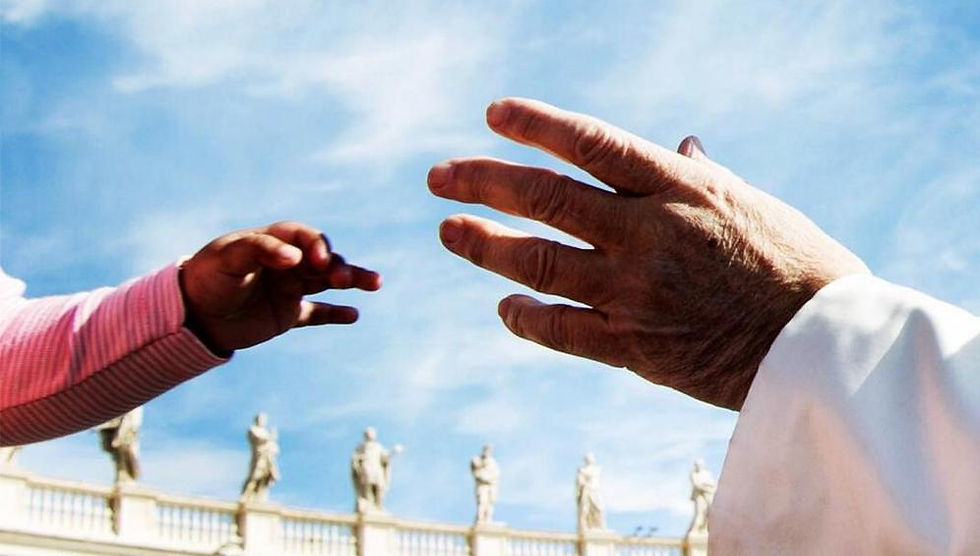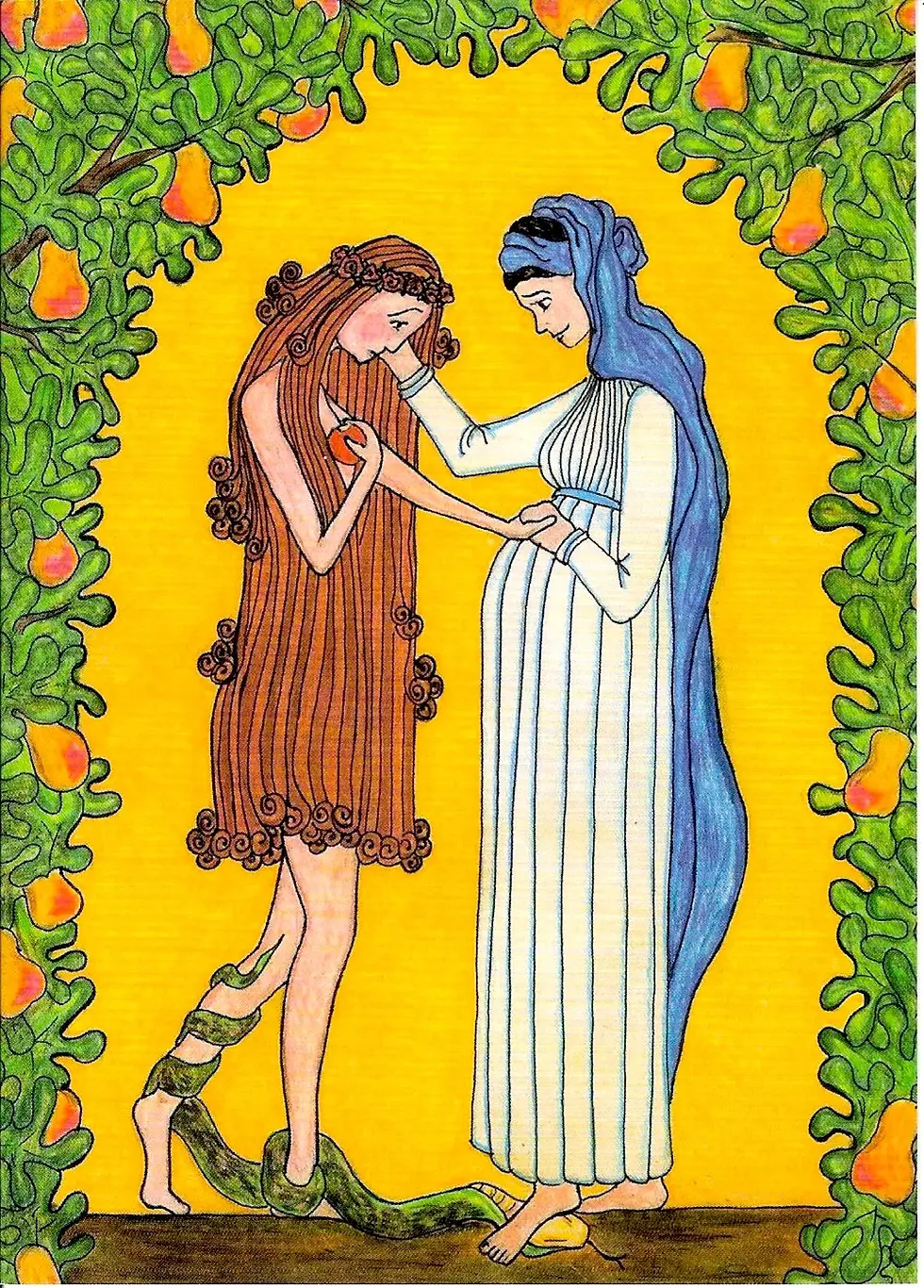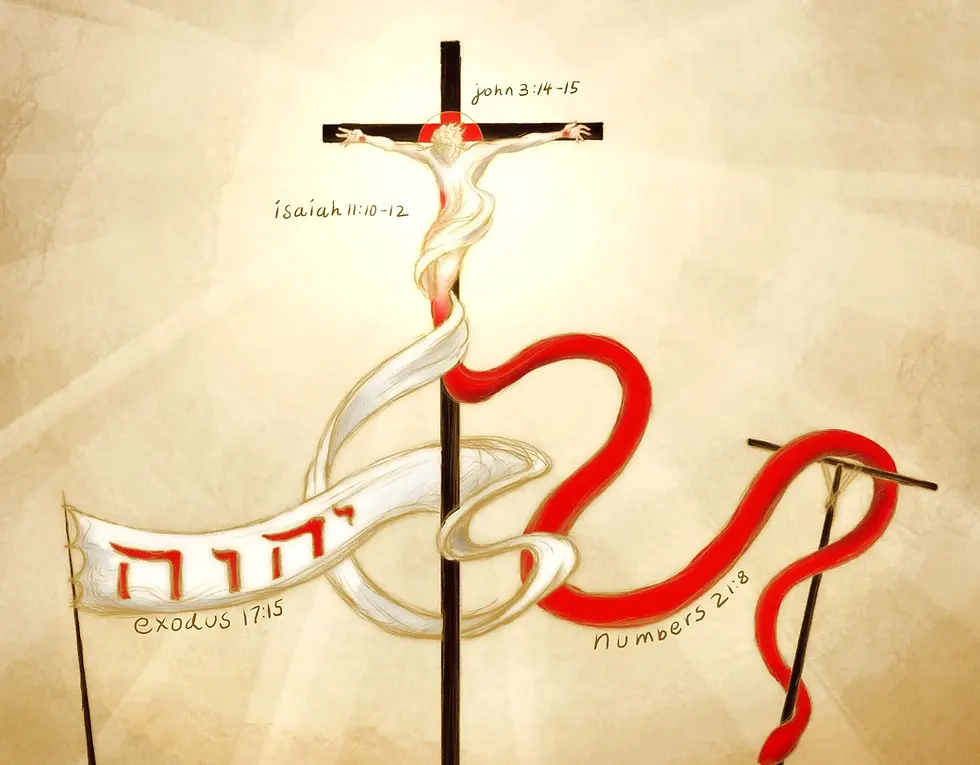SO, WHAT’S NEW THIS NEW YEAR?
- Charles
- 31 déc. 2022
- 6 min de lecture
Sunday Reflections for New Year's Day & Solemnity of Mary, the Mother of God
2023 is at our doorsteps and it’s time for the usuals: new resolutions, new purchases, new life goals, etc., Realistically though, New Years’ day is when the whole world celebrates the fact that a date changes. A new year cannot produce magical changes overnight. What it brings, however, are opportunities to make a change. On this New Year’s day, the Church celebrates the solemnity of Mary, Mother of God, and thus presents us with a model for true and lasting newness, a blueprint for a new manner of Christian living: the model of Theotokos (the God-bearer).

New Testament, the Theotokos way:
There are two Greek words used to refer to ‘newness’. The first one is ‘Chronos’ meaning newness in time. For example, we refer to a shirt we bought last year as an old one. Whereas the shirt we bought this year is new in relation to the old one. Here newness is measured by time and simply means the latest. However, there is another Greek word that is used to refer to a different kind/level of newness: ‘kaine’. Here newness is not measured by time but by kind/quality. 10 years ago, we used to have heavy cell phones with a keypad. Now almost all of us own phones with touch screens. Our new phones are ‘new’ in comparison to the old ones not just because they were manufactured recently. They are new in quality since they can do what the old phones with keypads could not. Our new phones are new in quality and just in time.
Thus, chronos is newness in time, while kaine is newness in quality. It is interesting to note that the word used in the term ‘New Testament’ is not chronos but kaine. In other words, the New Testament is ‘new’ not merely because it is “recent” or “chronologically new” in time but because it is also new in character and quality. As the second reading of today’s mass insists, the motherhood of Mary heralds the birth of a qualitatively New Testament. Through Mary, God accomplishes a qualitatively and radically new Testament (Isaiah 43:19) and therefore we honour Mary as the Ark of the New Covenant. Mary is the beginning of the New Testament and through her salvation history enters a new phase.
God’s intervention in the life of Mary becomes a concrete and qualitatively new expression of God’s dwelling ‘amidst’ us. Thus, Mary’s fiat became the moment of our passage from the Old to the New Testament, a key moment for the entire world and for salvation history. What does this mean to our Christian living? Discipleship involves saying a decisive and uncompromising ‘yes’ to God’s plan of accomplishing something radically new through in our daily lives. Saying yes to God is not always easy or convenient but it is decisive in ways that we cannot immediately conceive or possibly imagine. Today’s first reading evokes the traditional priestly blessing that God taught Aaron. In this passage, the Lord promises his presence and blessing to bring about quality change in the lives of His people.
New centres at the periphery, the Theotokos way: We know well that Jerusalem is the geographical, religious, administrative, historical, and political centre of Israel. No wonder the three wise men headed first to Jerusalem, the capital city where one might normally expect to find the Newborn king. Mary’s motherhood, however, challenges our obsession with the centres. The angel visits the future Mother of God in Nazareth not in Jerusalem. Mary gives birth to the long-awaited Davidic King in Bethlehem, not in the royal palace. And as the Gospel indicates, she laid Him in a manger, not in a royal crib to be greeted by shepherds and farm animals instead of officials, priests of the Temple or members of the royal court.

As we know well the concept of ‘peripheries’ has been a keyword throughout the papacy of our Holy Father. Addressing the conclave in 2013, the then-Cardinal Bergoglio said, “The Church is called to come out of herself and to go to the peripheries, not only geographically, but also the existential peripheries: the mystery of sin, of pain, of injustice, of ignorance and indifference to religion, of intellectual currents, and of all misery”. Mary’s motherhood is a perfect model of this vocation to go to the existential peripheries. In choosing to accompany her son to the margins (Bethlehem, Nazareth, Egypt, Cana, Calvary, etc.,), Mary shows us the perfect way to make the peripheries our new fields of mission and thus live our Christian vocation to the fullest.
The newness of this role reversal of the centre and the peripheries is what the Church intends from its ongoing Synod on Synodality. This New Year 2023 is going to be crucial for the Church, as it enters the continental and the universal phases of the synod. Imperative to this Church’s objective is our own individual and ecclesial commitment to overcoming our fixation with centres. The Theotokos way is synodal and challenges us to choose the peripheries over our power centres and to choose the less privileged over the affluent. This newness involves redefining our traditional parameters of success, pleasure and happiness. The working document for the Continental stage of the Synod on Synodality entitled Enlarge the Space of your tent (Is 54:2) identifies the peripheries that need to become our mission fields today: “the poorest, the lonely elderly, indigenous peoples, migrants without any affiliation and who lead a precarious existence, street children, alcoholics and drug addicts, those who have fallen into the plots of criminality and those for whom prostitution seems their only chance of survival, victims of trafficking, survivors of abuse (in the Church and beyond), prisoners, groups who suffer discrimination and violence because of race, ethnicity, gender, culture and sexuality (No.40)
New discipleship, the Theotokos way: While celebrating the motherhood of Mary, we cannot forget Eve, who was blessed with a similar motherhood role. As Genesis 3:20 states, “The man named his wife Eve because she was the mother of all living”. While both Eve and Mary were called to be mothers, their models of motherhood are starkly different.

1. Mother Eve disobeyed. Mother Mary obeyed. Why does the Bible repeatedly insist that obedience is a virtue and disobedience is a sin? Is it a cheesy way to cleverly disguise obedience and order? Is it a spiritual justification of some oppressive rules in the name of God? Where is our liberty to act as we like? Mary’s motherhood teaches us that discipleship is not doing what one wants. It is rather doing what it takes to become the best version of oneself and the only way to achieve this is by fulfilling God’s purpose for each of his sons and daughters.
2. Mother Eve hid from God, while Mother Mary arose and went with haste” (Lk 1:39) to help her cousin Elizabeth. Mother Eve wanted to become like God (Genesis 3:5), while Mother Mary chose to become God’s servant. Discipleship does not begin and end with the disciple. It begins with God’s call and ends with service to the other. Remember we are servants and not slaves. We enter into a relationship of giving in freedom because this is the way of Christian discipleship.
3. Mother Eve subjected history to sin. Mary liberated the world to salvation. Humanity is liberated from the curse of original sin through Mary’s discipleship. Her motherhood is not merely a spiritual justification of the traditional (and even oppressive) gender roles ascribed to our mothers: obedience, servitude, holiness, etc., We live in an age when values such as holiness, chastity, obedience, and altruism are labelled as out of style, and even archaic. Mother Mary shows us that we can achieve true liberation by choosing to assume these roles through free will and courageous self-giving. Radically new discipleship, the Theotokos Way obliges us to freely choose to live a counter-cultural Christian life.
As we step into a ‘new year’, let us resolve to make this year ‘NEW’ not just in relation to time (chronos) but in quality (kaine), the theotokos way. Let us say ‘yes’ to God’s purpose for our lives, let us make the peripheries our new centres of mission and may our discipleship enable us to become obedient and counter-cultural servants of holiness. Let us resolve to make use of the many opportunities that this New Year 2023 bring our way to let God bring about qualitative newness in our lives, in our central priorities, and in the way we live our discipleship.




Commentaires